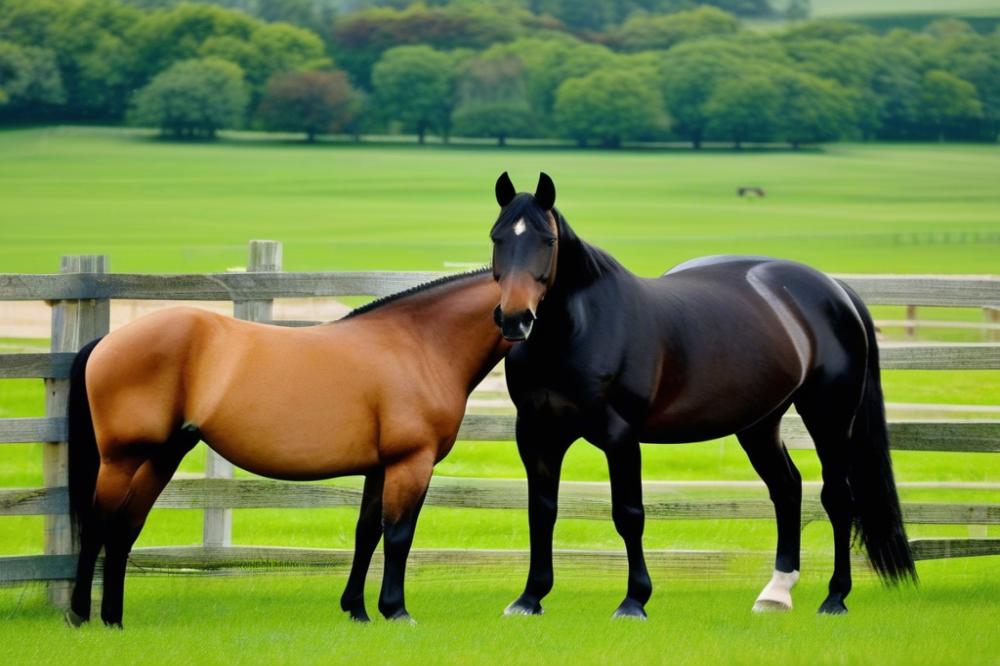Understanding the Journey of Horse Ownership
There is an undeniable joy in owning horses. These magnificent animals provide companionship, excitement, and a sense of fulfillment. Building a bond with a horse can be one of life’s most rewarding experiences. However, the journey is not without its challenges. With these beautiful creatures come responsibilities that can seem overwhelming, especially for those just starting out.
For those navigating the path of horse ownership, managing land for these animals is a crucial aspect. Proper land management affects the health and happiness of the horses. It involves maintaining pastures, managing fencing, and ensuring the living environment is safe and supportive. Without attention to these details, the joy of owning horses can quickly turn into frustration.
Throughout this article, we will delve into essential considerations to keep in mind. Topics will include land maintenance, nutrition, and the physical needs of the horses. first-time horse owners can benefit from understanding these factors. Knowledge in these areas can lead to a rewarding experience for both the owner and the horses. As we explore these key points, it’s important to remember that each situation is different, and learning will continue with each step taken.
Understanding horse care

Owning a horse comes with a variety of responsibilities. Basic horse care necessities are crucial for keeping a horse happy and healthy. A proper diet includes high-quality hay, grains, and fresh water. Regular exercise is also vital. Horses require sufficient turnout time in a safe environment. Clean and spacious stalls contribute to their well-being.
Regular Health Check-Ups and Veterinary Care
Horses need regular health check-ups from a veterinarian. Schedule yearly vaccinations to protect against common diseases. Routine dental care is important, as horses can suffer from dental issues that affect eating. Be aware of signs of illness, like changes in behavior or appetite. Regular hoof care from a farrier can prevent issues like cracks and infections. Care management is an ongoing task that requires attentiveness.
Understanding Different Horse Breeds and Their Needs
A variety of horse breeds exist, each with its own unique characteristics. Some breeds require more exercise than others. Others may have special grooming needs. Knowing the breed can help tailor care routines. For example, Thoroughbreds usually need more rigorous training, while draft breeds tend to be calmer. Researching breeds can assist in understanding their behavior and temperament.
Horse care involves much more than merely providing shelter and food. First-time owners should become familiar with the needs of their specific breed. Enjoying the unique bond with a horse comes from understanding and meeting those needs. Every horse is an individual with its own personality and requirements. Learn as much as possible to foster a strong relationship and maintain the horse’s health.
Pasture Management

Quality pastures are essential for the health of horses. Good grazing land provides the nutrients they need, keeping them strong and energetic. Additionally, healthy pastures can reduce the risk of disease. Horses that graze on well-maintained land show fewer health issues compared to those on poor ground.
One important strategy involves regular soil testing. Testing reveals nutrient levels and helps identify deficiencies. This information is crucial for deciding on fertilizers and supplements. Another method is to manage the grass height. Horses perform best on grass that is about 3 to 4 inches tall. When grass is too short, it can affect their digestion and overall well-being.
Monitoring moisture levels also plays a key role. Too much or too little water can harm pasture health. During dry spells, consider implementing irrigation methods. When periods of heavy rain occur, proper drainage can also help. Well-drained land promotes strong grass growth and reduces muddy areas.
Rotating pastures is a highly effective technique. Dividing the land into smaller sections, or paddocks, allows grass to recover. When one area is grazed, horses can be moved to another section. This practice reduces overgrazing and weeds. It also gives the grass time to regenerate, leading to healthier pastures.
Setting up a rotation schedule will help maintain this practice. Plan in advance to determine how long horses remain in each paddock. Consider factors like grass growth and weather conditions. Over time, a well-designed rotation can create strong, vibrant pastures.
Using cover crops is another great strategy to improve pastures. These plants protect the soil and prevent erosion during off-seasons. They also enrich the soil, providing additional nutrients for the grass that will grow later. Incorporating legumes can boost nitrogen levels, benefiting the overall land health.
Maintaining fences is essential for pasture management. Good fencing keeps horses safe while also preventing them from damaging the land. Regular checks for wear and tear can help avoid future issues. When problems arise, repairs should be made immediately to maintain boundaries.
Fencing Considerations
Choosing the right fencing is essential for managing a safe horse property. Various types of fencing are available, each with its pros and cons. Wood fencing is popular for its aesthetic appeal but can be costly. Vinyl offers a maintenance-free option that can stand up to the elements. Electric fencing provides a deterrent and is often used as a supplement to other types. Stock fencing is also an option, but it may not be the best for all breeds. Consider your budget and the needs of your horses when selecting materials.
Once you have chosen your fencing, proper installation becomes crucial. Posts should be sunk deeply for stability, especially in areas with strong winds or heavy rain. Gates must open easily and close securely. Using the right tools is important to ensure a tight and neat install. Regular checks for loose boards or damaged sections can prevent bigger issues. A proactive approach to maintenance will save you time and money.
Safety should always be the priority on your property. Regular inspections should include looking for sharp edges or protrusions that can cause injury. Ensure that all fencing is at least five feet high to prevent jumping. It’s wise to use smooth materials to avoid potential cuts or scrapes. Training your horses to respect boundaries adds another layer of security. Remember, a secure horse is a happy horse. Keeping these tips in mind will help create a safe environment for everyone involved.
Water Supply Management
Access to fresh water is vital for all horses. Without it, their health can decline quickly. Horses need a significant amount of water daily, especially during warmer months. A reliable water source can help keep them hydrated and healthy.
Maintaining clean water sources requires diligence. Regularly check water troughs and tanks for debris. Cleaning these areas can prevent algae buildup and keep the water fresh. Consider using automatic waterers, as they can help maintain a constant supply while reducing the chances of contamination.
Seasonal Considerations for Water Supply
Seasonal changes can impact water availability. In winter, frozen pipes and tanks can pose a real problem. It’s important to monitor them regularly. Heating elements or insulated tanks can help prevent freezing.
In the summer, evaporation can reduce water levels quickly. Check the troughs often, especially during hot spells. Adding shade around watering stations can also encourage horses to drink more. Making sure there’s always enough water is essential for their well-being.
Shelter Options
Types of Shelters Suitable for Horses
Different types of shelters can provide protection for your horse. A run-in shed is a popular choice for many owners. These structures allow horses to come and go freely, giving them the choice to stay inside or go out. Another option is the barn. Barns offer more enclosed space and can protect against severe weather. They also create a safe area for grooming and storing supplies. Temporary structures, like portable stalls or tents, can work well, especially for travel. Many prefer a combination of these solutions to meet their horses’ needs.
Key Features to Include in Shelters for Comfort and Safety
Safety features are vital in any horse shelter. First, ensure the floors are non-slip to prevent accidents. A solid roof is also necessary to protect against rain and sun. Horses need plenty of space; they should be able to move freely without feeling cramped. Good ventilation is essential too. This keeps air circulating, reducing the risk of respiratory issues. A clean area is important, so appropriate drainage should be in place to keep it dry. Providing fresh water and safe feed within reach adds to a welcoming environment.
Regular Maintenance of Shelter Structures
Maintaining your horse’s shelter is crucial for long-term safety and comfort. Regular inspections can help identify any repairs needed. Look for loose boards or sharp edges that could harm the horses. Cleaning the shelter should be done frequently to prevent disease. Manure, hay remnants, and dirt can invite pests. Keeping an eye on the roof and walls also helps prevent leaks and drafts. Seasonal maintenance tasks, like checking for structural stability or reinforcing fencing, keep everything secure. Take time to assess and address these aspects regularly.
Feed Storage Solutions
Properly storing feed is essential for any horse owner. Many factors influence how you should store your horse’s food. The right approach can affect your horse’s health and well-being.
First, consider the location of your feed storage. A cool, dry, and well-ventilated area is ideal. Avoid placing it in direct sunlight or near moisture sources. Animals can also be curious. Secure storage helps keep feed away from pests and other animals.
Preventing spoilage is crucial. Moldy feed can cause serious health issues for horses. Always check for signs of spoilage before serving any food. This can include unusual smells or a dusty appearance. Maintaining a clean storage area will also minimize risks.
Different breeds have unique nutritional needs. Draft horses require more calories compared to ponies. Understanding these differences can help you provide the best diet for your horse. Consult with a veterinarian or an equine nutritionist for tailored advice.
Pest infestations can be a major concern as well. Rodents and insects love feed storage areas. Use sealed containers designed for animal feed. Specialized bins can keep unwanted guests out and preserve nutritional quality.
Label your feed containers clearly. This practice helps prevent mix-ups and ensures your horse’s dietary needs are met. Rotation of feed is important too; always use older bags first. This keeps everything fresh and healthy.
Manure Management Practices
Understanding manure management is essential for any horse owner. Proper handling of manure prevents environmental problems and promotes a healthy landscape. It plays a crucial role in maintaining both pasture health and cleanliness. While horse manure can be a valuable resource, improper management can lead to pollution and health risks.
Techniques for Composting and Disposal
Composting manure is an effective method to recycle waste. Start by collecting the manure in a designated area, ideally away from water sources. Mixing the manure with bedding material encourages decomposition. Over time, microorganisms will break down the waste into a nutrient-rich compost. This compost can be used to enrich soil and support plant growth.
Another option for disposal is to pile and store the manure until it can be removed. Regularly scraping and collecting manure from pastures reduces the buildup. Disposal solutions also include hauling it to a local farm that may need it or using it as fertilizer in gardens. Horse owners need to follow any local regulations regarding manure disposal.
Impact of Manure on Land Maintenance
Manure affects the quality of land in various ways. When left untreated, it can lead to bacteria growth and foul odors. Accumulating manure also attracts pests, which can spread diseases. Effective management practices help minimize these risks, creating a healthier environment for both horses and humans.
Additionally, well-managed manure acts as a natural fertilizer. It enriches soil, enhances plant growth, and can even improve pasture sustainability. Keeping track of how much manure is produced and how it is handled is crucial. Regular maintenance promotes a balanced ecosystem in your own backyard.
General Land Maintenance
Routine Land Care and Maintenance Tips
Every piece of land has its specific needs. Regular inspections can help catch small issues before they become big problems. Mowing keeps grass at a manageable height. This practice not only looks tidy but also prevents weeds from taking over. Fencing should be checked frequently for damage. Broken sections pose a risk to horses.
In addition, managing water drainage is key. Employing techniques like trenching can help direct excess water away from high-traffic areas. Moreover, composting manure can provide nutrient-rich material for the land. Keeping the horse area clean will contribute to overall health.
Importance of Soil Health and Vegetation
Soil health plays a crucial role in any horse property. Regular testing can uncover important information about nutrient levels. Organic matter enriches soil, making it better for plants to grow. A balanced mix of grasses and plants is ideal for horses’ diets. Diversity in vegetation helps reduce pests and diseases.
Nurturing vegetation creates a healthier environment. Planting native species is often beneficial. These plants usually require less maintenance and are well-suited to the local climate. Additionally, well-established plants keep soil from eroding. Healthy land leads to healthier horses, forming a connection between the two.
Seasonal Tasks for Maintaining Horse Property
Seasonal changes bring different maintenance tasks. Spring is a great time to aerate the soil and reseed any bare patches. Planning ahead for summer includes establishing a regular watering routine. Keeping grass length appropriate during dry spells is important for both appearance and health.
Autumn often requires clean-up of fallen leaves and debris. This will help prevent insect breeding grounds. Winter months typically slow down land work but don’t ignore potential ice hazards. Keeping pathways clear ensures safety for you and your horses. Each season brings its chores, but staying proactive keeps everything in good shape.
Final Thoughts on managing land for Horse Ownership
Recapping the journey to responsible horse ownership highlights several important factors. Understanding basic horse care, from nutrition to health needs, stands as a cornerstone. pasture management cannot be overlooked either, as it directly affects the well-being of the animals. Learning how to maintain the land is equally crucial for providing a safe and healthy environment.
Efficient land management makes all the difference in the quality of life for horses. Taking the time to research and implement sustainable practices leads to better conditions for the animals and the land itself. Owners should remain mindful of their unique challenges, but also the joy that comes from working the land for these marvelous creatures.
Owning horses is a rewarding journey filled with learning and growth. Each day spent caring for your horses and managing your land brings new experiences and lessons. Challenges will arise, but they can be overcome with patience and dedication. Engage with your community, seek advice, and refine your methods as you progress.
Ultimately, the fruits of your labor will shine through in the health of your horses and the beauty of your land. Embrace the process, be proactive in your management practices, and enjoy the special bond that develops with these magnificent animals. You are embarking on a fulfilling adventure that offers endless rewards.



